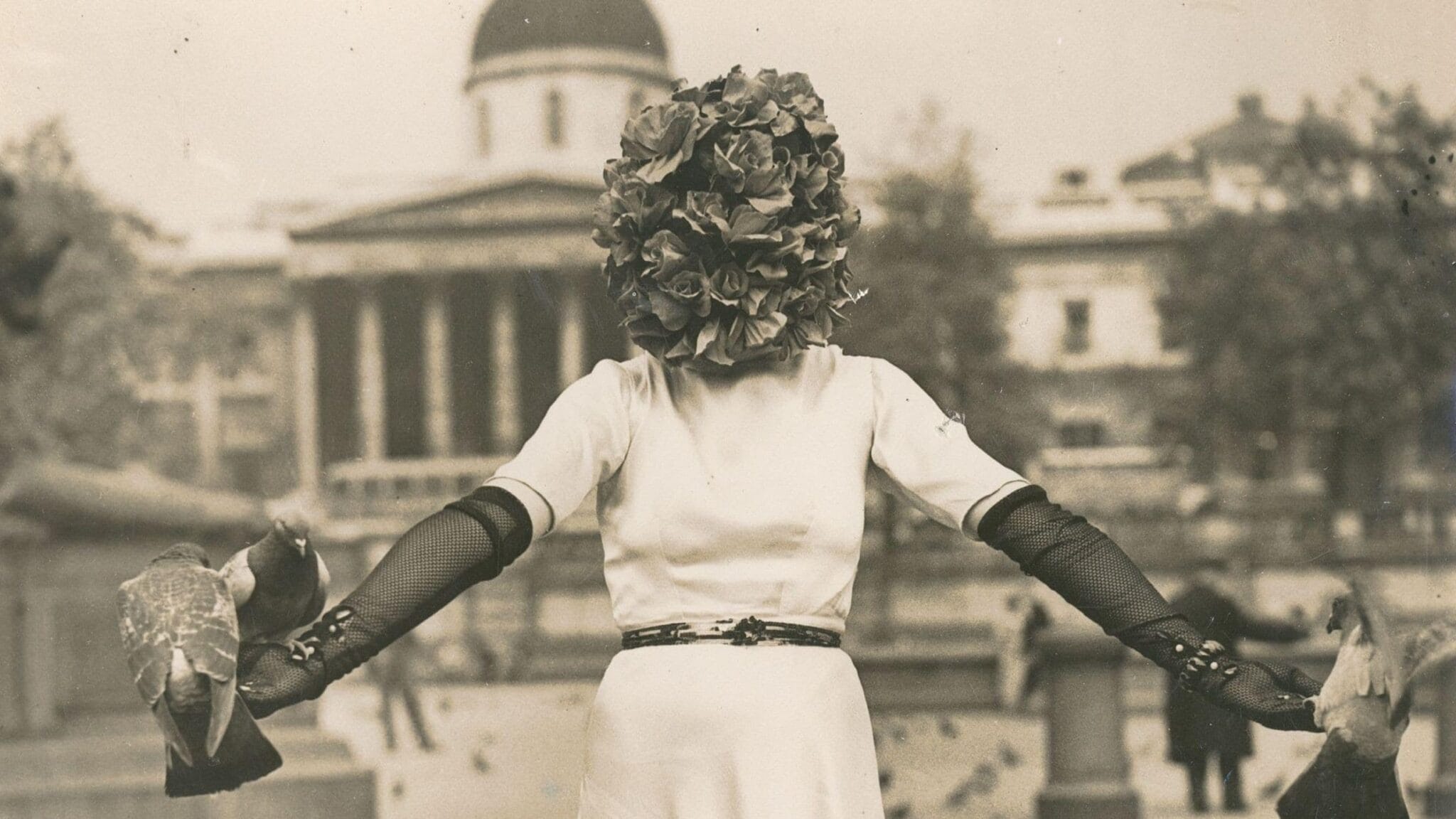Phantoms of Surrealism. 19 May – 12 December 2021. Gallery 4
On a hot summer’s day in 1936 a woman dressed in a bridal gown paraded around Trafalgar Square, London, her head entirely covered with red roses, in tribute to Salvador Dalí’s painting, Woman with the Head of Roses (1935). The mystery woman, who puzzled passers-by and made newspaper headlines, was later revealed to be artist Sheila Legge (1911–1949), appearing that day as ‘the phantom of Surrealism’ to launch the London International Surrealist Exhibition, held at the New Burlington Galleries in Mayfair.
Whitechapel Gallery’s new archive exhibition, Phantoms of Surrealism, brings together artworks, photographic scrapbooks, press cuttings and original correspondence from the London International Surrealist Exhibition (1936), including a new scale model. Coinciding with Eileen Agar: Angel of Anarchy, the show reveals the pivotal role of women as artists, behind-the-scenes organisers, editors and animators of the Surrealist movement in Britain.
The exhibition features eleven artists including Ruth Adams (1893–1949), Eileen Agar (1899–1991), Elizabeth Andrews (1882–1977), Diana Brinton Lee (d. 1982), Claude Cahun (1894–1954), Ithell Colquhoun (1906–1988), Sheila Legge, Grace Pailthorpe (1883–1971), Elizabeth Raikes (1907–1942), Edith Rimmington (1902–1986) and Stella Snead (1910–2006).
Also presented are artworks from an anti-war exhibition staged at Whitechapel Gallery in 1939 by The Artists’ International Association, dedicated to the ‘Unity of Artists for Peace, Democracy and Cultural Development’. Revisiting the Gallery in 2021 are two sculptures, Woman (1934) by Elizabeth Raikes and Swan (1930s) by Elizabeth Andrews, alongside Ithell Colquhoun’s painting Water-Flower (1938), recently acquired by a public collection after it was spotted for sale at an antiques shop in Penzance. Two works by Edith Rimmington, Family Tree (1937) and Fallen Chariot (1939), are also on view, demonstrating the artist’s particular interest in maritime landscapes and mythology.
The juxtaposition of these two momentous, historic displays provides these artists with long overdue recognition for their contributions to the history of art. Lesser-known figures such as Diana Brinton Lee and Stella Snead are here spotlighted as key strategists and participants in the early history of the movement in the UK. Where many women artists might once have been acknowledged as mere ‘actors’ in other renowned artists’ work, Phantoms of Surrealism crucially offers them centre stage.
